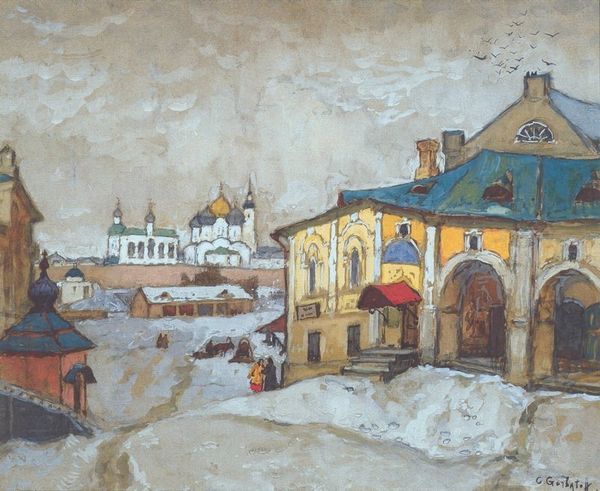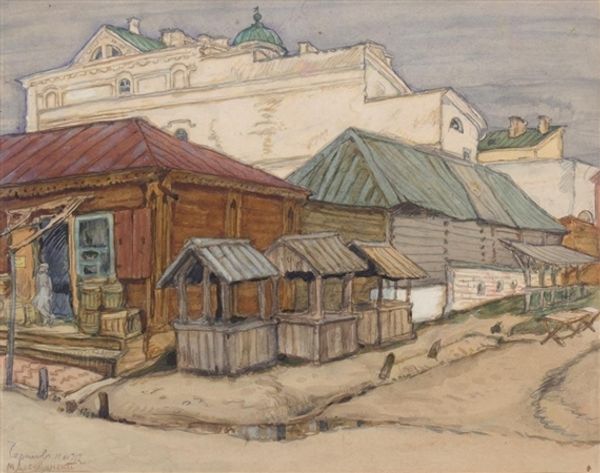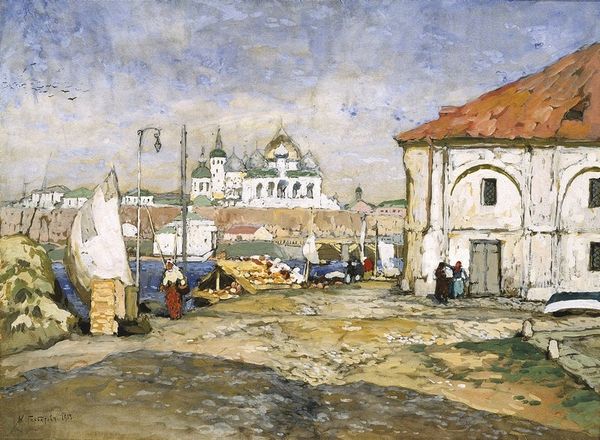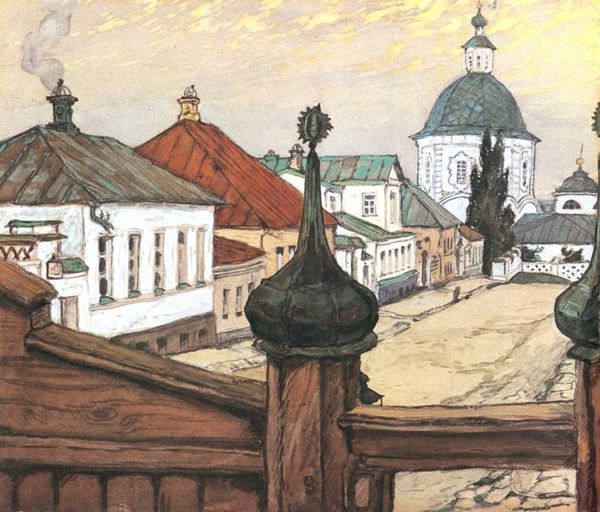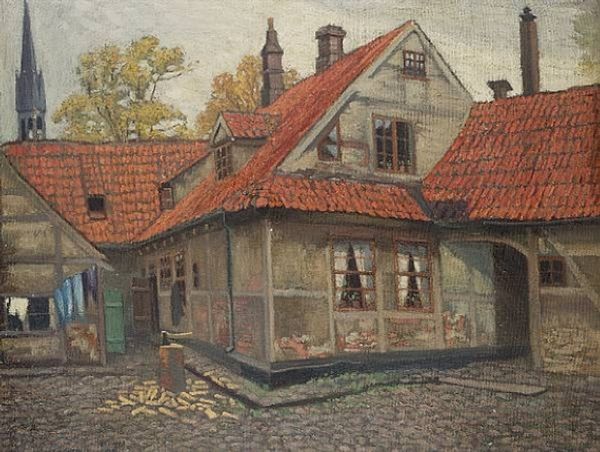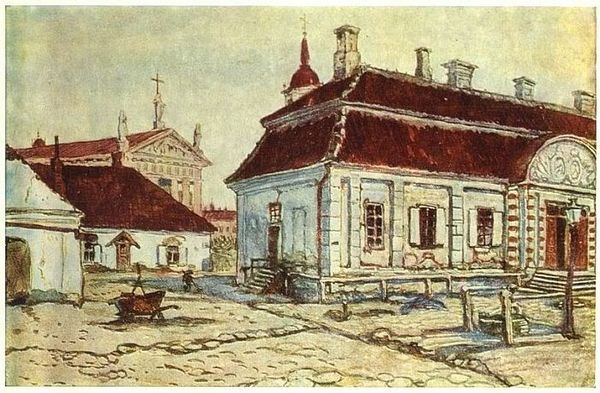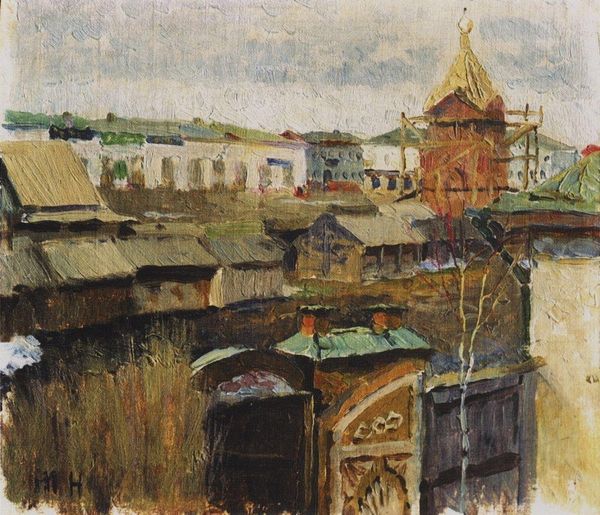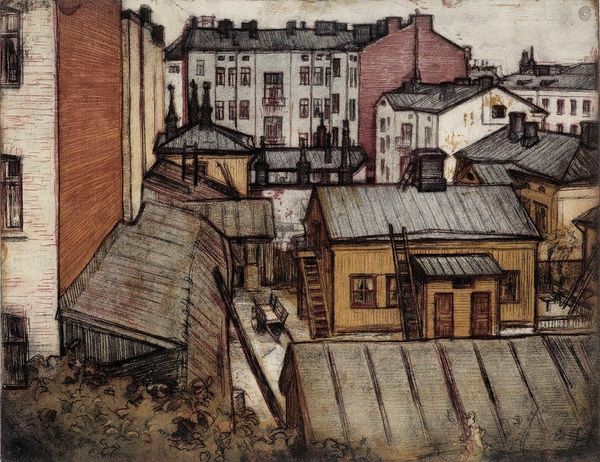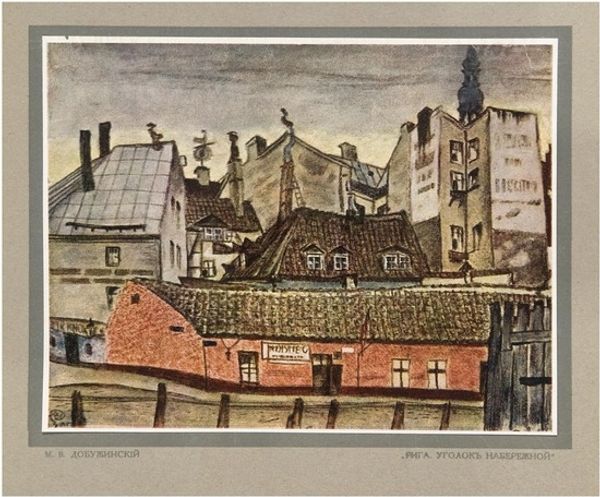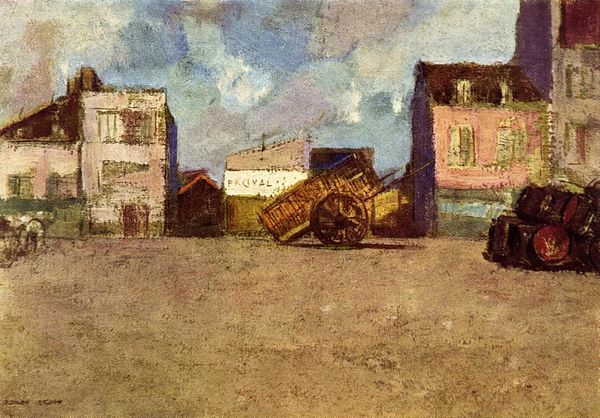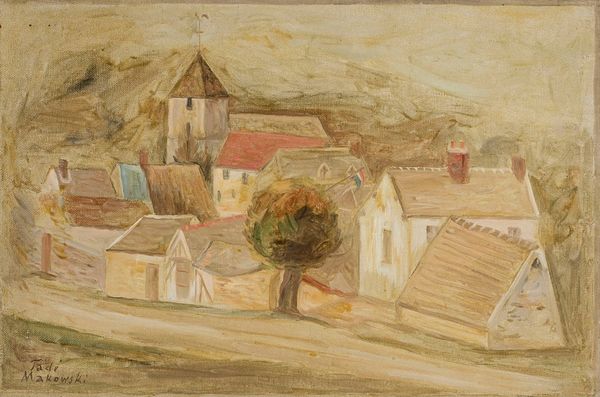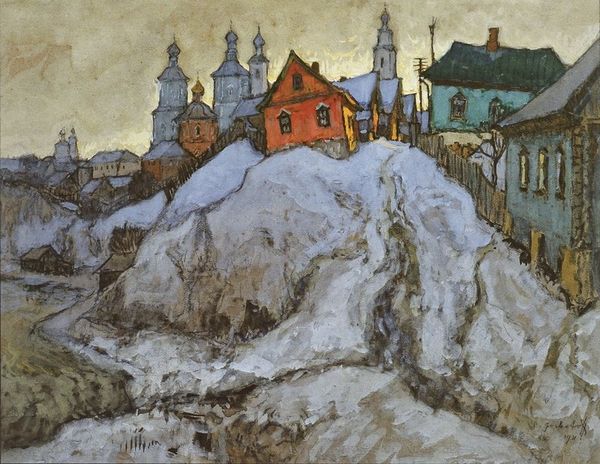
Copyright: Mstislav Dobuzhinsky,Fair Use
Curator: Dobuzhinsky’s "Kaunas," painted in 1933, depicts a street scene with layered buildings rendered in watercolor and lithographic ink. The roofs in earthy reds and muted greys feel immediately striking. Editor: I agree. It’s immediately evocative. There’s something somber about the subdued color palette. I imagine a wet, cold morning in this place. You get a sense of everyday life but also perhaps a sense of longing, almost like an outsider looking in. Curator: Dobuzhinsky often captured urban landscapes. His skill with lithography enabled him to replicate detailed architectural forms, grounding the city both visually and socially. Here, we observe the layered rooftops, the wooden structures. Note the artist's mark making – how those subtle differences in material register and produce this quiet feeling you mentioned. Editor: Absolutely, and think about Kaunas in 1933. Lithuania had declared its independence just 15 years earlier, but tensions were already building across Europe. This image offers a window into that moment in history: we must ask ourselves whose Kaunas is being depicted here. Who lives in those buildings? Who would have the leisure time to linger in such streets and why? The subtle inclusion of labor – note the carts on the street in front of the image – gives an impression of class stratification present in the town at that point. Curator: And these specific details ground my analysis: The artist renders these details that allow him, and now us, to reflect upon them: the layered building construction with those carts present at the foot of it. Editor: Seeing this now makes me consider the precarity of existence, how these streets soon would be upended as conflict began to reshape Europe in the leadup to World War 2. This painting might show something that the painter could tell was transient and temporal. What might the building materials used tell us of that place and moment? Curator: Ultimately, it speaks to the complexities embedded within a seemingly simple urban scene. Its visual accessibility belies the deep, contextual undercurrents you so brilliantly identified. Editor: Exactly, it's through understanding context we recognize the full picture.
Comments
No comments
Be the first to comment and join the conversation on the ultimate creative platform.
